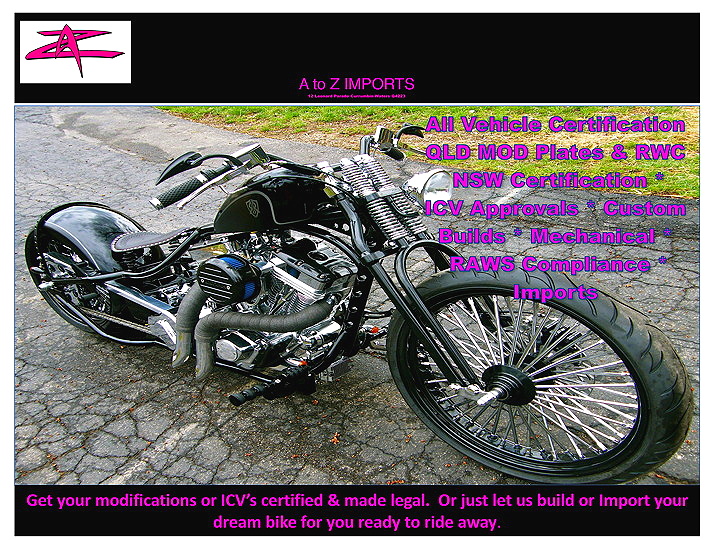
Japanese Inspired Harley-Davidson Panhead Project
“There are some reproduction parts, and original parts; it’s a bit of a mixed bag but it stuck to budget and runs really well,” said Stew.
I BOUGHT this 1953 FL Panhead in pieces from a guy in Adelaide who had bought it at auction from a deceased estate. When it went to auction it was in a chopper style and came with some boxes of parts. The engine and gearbox had been rebuilt and it had been converted to a 12 volt electronic ignition.
The guy who bought it from the auction had plans to turn it back to original, so he then bought some more parts for it like the Hydra Glide forks, oil tank, fuel tanks, wheels, etc. Then, this guy had to move states, so the Panhead went up for sale. I flew down from the Gold Coast to view it. It was rolling but the engine was zip-tied into the frame and there were boxes of parts.


I was on a budget so I wrote down all the parts that were there, I came home and worked out what parts were needed to finish it, and what sort of money I could make back from selling the excess parts that I wasn’t going to use. Two weeks later I was driving a hire-car full of parts back from Adelaide to the Gold Coast.
I had an idea in mind of the type of bike I wanted before I even started looking for a Panhead. I really love the Japanese style of vintage choppers/bobbers. They have a style of their own and some of the finishes they use are really cool. You can tell a bike is old and worn but they can look really clean at the same time.


I sprayed the frame with a rattle-can and started putting the parts on that I could. I was really lucky with the parts I had—the star-hub wheels were already rebuilt and ready to go, all of the rear brake parts were there, but the forks where shot and needed all new internals.
I had the fork tin-wear vapour-blasted, as well as the primary cover and handlebars, so that they had that dulled-off look.
The fuel tank is a new mustang tank with some old Norton tank strip down the middle. The original 50’s tanks I had needed work and just sat too low for the look I was going for. I kept the oil tank as it was.
Luke Wright, a young fabricator from the Gold Coast, did a heap of work on this bike. The fuel tank, the rear guard and cowl section, sissy bar, handlebars, exhaust mounting, and heaps more. He did the sneaky speedo mounting and the awesome stainless oil lines to the oil cooler. The seat and rear cowl come off in one piece with just one wing nut so you can get to the battery and oil tank tool-free.


Nathan Bilsborough, another young guy from the Gold Coast, did the paint. The wing on the tank is by hand and referenced from some dodgy drawings I gave him.
Dave Butler did all of the mechanical work. Some parts went together easy and some didn’t go together at all. He did an amazing job to get this bike on the road.
The ride is very raw; it just feels like an engine bolted to a frame. I stuck with the original gearing so it’s punchy as fuck through the hills around where I live, but it’s not the most comfortable on the highway.
Kick starting is easy; usually the second kick does it.
There are some modern parts on there, like the oil pump, belt primary and the S&S carby, as I wanted the bike as reliable as possible. There are some reproduction parts, and original parts; it’s a bit of a mixed bag but it stuck to budget and runs really well.
Ollie, the engine master from Brisbane, sorted out the gearbox and crankshaft seals, and currently this thing does not leak a drop of oil. Can’t expect that to last forever though.



Photos by Rod Cole; story by Stew

